ISSN 2348-1196 (print)
International Journal of Computer Science and Information Technology Research ISSN 2348-120X (online) Vol. 8, Issue 3, pp: (268-272), Month: July - September 2020, Available at: www.researchpublish.com

ISSN 2348-1196 (print)
International Journal of Computer Science and Information Technology Research ISSN 2348-120X (online) Vol. 8, Issue 3, pp: (268-272), Month: July - September 2020, Available at: www.researchpublish.com
2Bob
Dhahran, Saudi Arabia
ten HaveAbstract: Enterprise computing systems are becoming increasingly compute-intensive year after year. The concern is that compute-intensive systems require powerful and higher frequency processing units that generate higher thermal output compared to traditional processing units. Any increase in temperature above the ideal environmental requirements for the computing systems will lead to a decreased lifetime of the equipment. This article looks into different cooling methods targeted towards securing the required heat dissipation to main optimal temperatures for the critical enterprise computing systems.
Keywords: CPU, Air-Cooling, Liquid-Cooling, Micro-liquid, Enterprise Computing, GPU, AI, Advanced Analytics
Cooling is an essential part of the wellbeing of a CPU. The CPU will perform better and will have a longer life if it is cooled properly. This article will describe different types of CPU cooling and which option fits best for different use cases
It will describe in details three different types of CPU cooling, namely cooling by air, liquid and integrated micro-liquid cooling. It will describe which type of cooling to be used, and predicts the future of cooling the CPU by using cuttingedge computing designs and cooling technologies such as microfluidic cooling, which in turn will lead to the capability of accommodating boosted computing performance
CPU frequency determines how fast the CPU can process a single thread. The higher the frequency the faster the processing of single threads. Higher CPU frequencies will benefit applications that cannot use multiple cores or applications that depend on fast processing.
General applications like Enterprise Resource Planning (ERP,) databases and web services are strongly reliant on the availability of CPUs and in less effect the fast response of each CPU request. These applications are not expected to benefit from increased frequencies. Contradictory of the general applications, High Performance Computing (HPC,) Artificial Intelligence applications and Analytical applications could highly benefit from higher frequencies, especially if the application response is time sensitive.
Although many components contribute to generating heat from the CPU. The CPU frequency is the highest contributor and one can assume that the higher the frequency the more heat the CPU will generate.
The Integrated Heat Spreader (IHS) is the external case of the processor and it disperses the heat generated by the processor to the outer shell. The maximum temperature allowed on the IHS is the Tcase. For most CPUs in the enterprise class the maximum Tcase is around 80 degrees Celsius. The popular Intel processor 8280 for example has a Tcase of 84 degrees Celsius.
ISSN 2348-1196 (print)
International Journal of Computer Science and Information Technology Research ISSN 2348-120X (online) Vol. 8, Issue 3, pp: (268-272), Month: July - September 2020, Available at: www.researchpublish.com
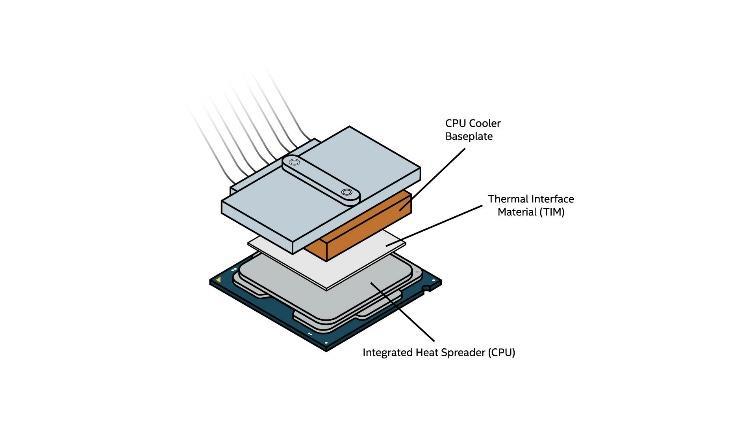
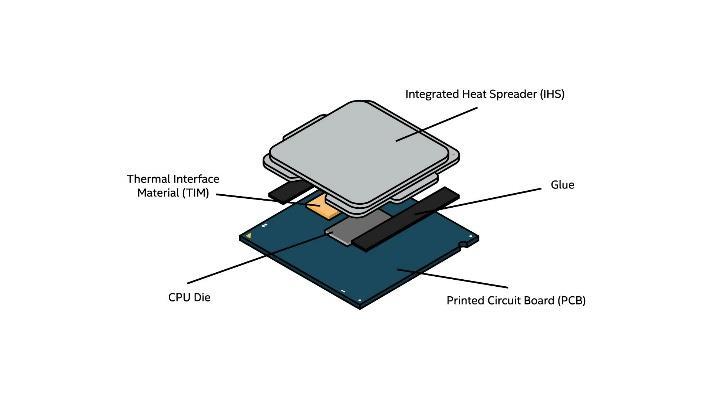
In this article, we describe two different ways to cool the CPU with air. The first method described, cools the CPU passively. The second method described, cools the CPU actively by using different types of fans.
As described in Fig. 2, a CPU with passive cooling will have a heat sink on top of the IHS. The heat is dispersed from the IHS to the heat sink and from the heat sink to the surrounding air. In Data Center equipment, this type of cooling is in use in combination with fans. The airflow within the chassis of a computer will provide cold airflow over the heat sync, which will then go through the fan to leave the chassis.
In an Active Air-Cooled CPU (Fig. 3) the heat is transferred from the IHS to an attached plate usually made from copper or aluminum for maximum heat dissipation. From there, heat pipes will transfer the heat directly to fans where it is cooled. This form of cooling is mostly used when space is an issue. Usually, Data Center equipment do not cramp into a confined shell such as mobiles phones and laptops, and therefore, this type of cooling is not common for Data Center equipment.
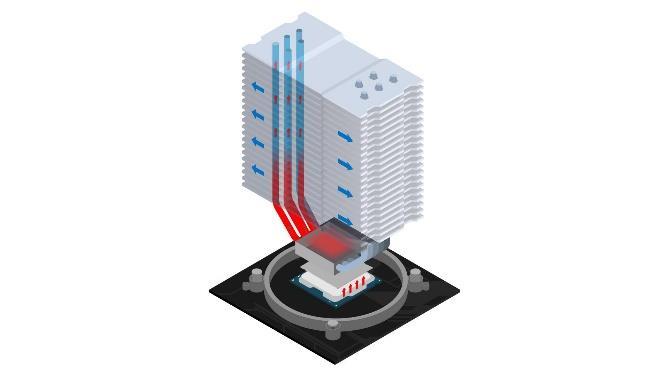
ISSN 2348-1196 (print)
International Journal of Computer Science and Information Technology Research ISSN 2348-120X (online) Vol. 8, Issue 3, pp: (268-272), Month: July - September 2020, Available at: www.researchpublish.com
Liquid cooling is a mechanism to cool CPUs in computing systems. In a similar fashion to Air-Cooling, there is a wide determination of accessible options for liquid cooling, yet most fall into two classes: All-in-One (AIO) coolers, or custom cooling circles. In this article, we will generally be zeroing in on AIO coolers, however the basic standards of how the fluid cools the CPU are the same in both options.
Just as with Air-Cooling, the cycle of liquid cooling begins with a baseplate that is associated with the IHS of the CPU with a layer of warm glue. This takes into account better heat dissipation between the two surfaces. The metal surface of the baseplate is important for the water block, which is the component that is loaded up with the coolant.
The coolant assimilates heat from the baseplate as it travels through the water block. It at that point keeps on traveling through the framework and upward through one of two cylinders to a radiator. The radiator opens the fluid to air, which causes it to cool, and fans appended to the radiator at that point dissipates heat away from the cooler. The coolant then reenters the water block, and the cooling loop starts once more.
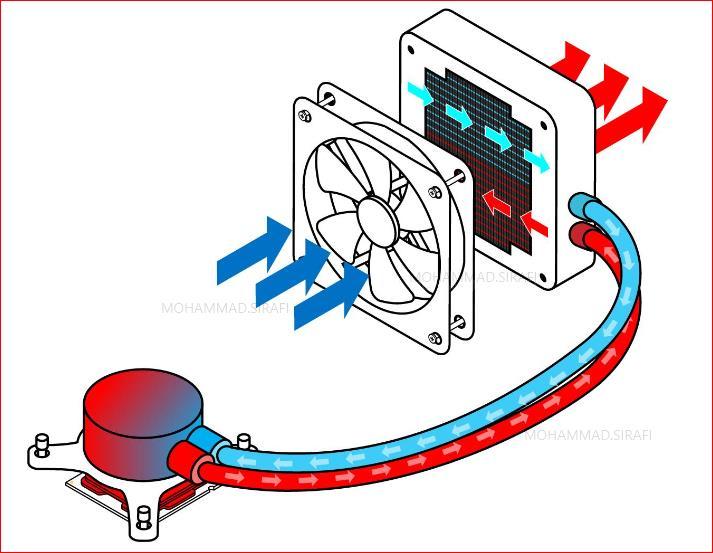
The following figures display the CPU Liquid Cooling components (Fig. 4) and mechanism (Fig. 5):
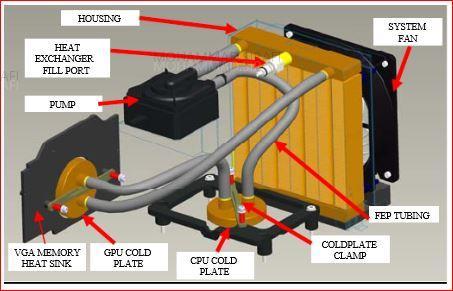
ISSN 2348-1196 (print)
International Journal of Computer Science and Information Technology Research ISSN 2348-120X (online) Vol. 8, Issue 3, pp: (268-272), Month: July - September 2020, Available at: www.researchpublish.com
Advantages of the CPU Liquid Cooling mechanism is that it: Is more efficient compared to Air-Cooling Reduces Data Center power consumption and Power Usage Effectiveness (PUE). Expands Data Center capacity due to higher efficiency. Consumes smaller space compared to Air-Cooling systems. Is more suitable for hotter climates.
CPU Liquid Cooling is essential for enterprises and organizations that rely on High Performance Computing (HPC) and utilize Graphical Processing Units (GPU) that out higher thermal levels compared to traditional CPUs. Examples of compute-intensive use cases would be applications that rely on Artificial Intelligence (AI), Deep Learning, and Big Data Analytics. Since Air-Cooling is less efficient in hot areas, liquid cooling becomes the more suitable alternative for high ambient temperature zones. Moreover, due to the smaller size of liquid cooling systems, they are better suited for Data Centers that are short in physical space
As stated in the previous two methods of cooling, it is increasingly challenging to manage the heat generated from CPU processors. Another challenge is the computing trend for smaller processor size with higher power consumption Typically, electrical engineers do the design of electronic parts, while mechanical engineers design the cooling parts Each of the two designs is performed separately. However, a team of researchers from École Polytechnique Fédérale de Lausanne (EPFL, English: Swiss Federal Institute of Technology in Lausanne) might have just changed the way we design processers by merging the electronic and cooling designs stages into one. The researchers deigned a microchip that has its own entrenched cooling system. As shown in Fig. 6, the research team achieved this by fabricating microfluidic channels around the transistor’s heat source, thus, the heat fluxes dissipate efficiently. Elison Matioli, who conducted the research, stated, “We placed microfluidic channels very close to the transistor’s hot spots, with a straightforward and integrated fabrication process, so that we could extract the heat in exactly the right place and prevent it from spreading throughout the device.”
It is important to note, that as of today, Integrated Micro-Liquid cooling technology is still in the academic phase and is not yet available in commercially mainstream computing equipment. Yet, the future of highly efficient cooling becomes more promising with the Integrated Micro-Liquid cooling technology, as it revolutionizes technology that offers more effective heat management within the computing processing chip By eliminating the large external heat sinks, this technology will have the advantage of making it possible to host a higher number of transistors on each chip. It will also
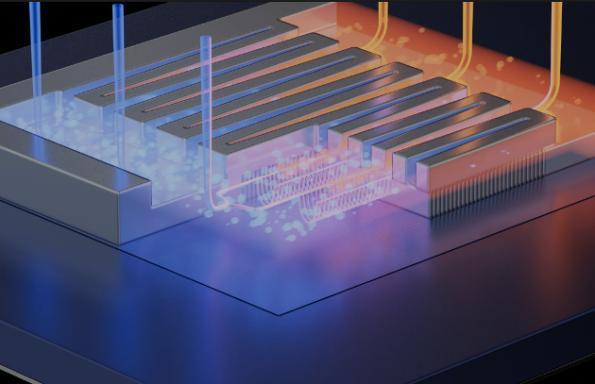
ISSN 2348-1196 (print)
International Journal of Computer Science and Information Technology Research ISSN 2348-120X (online) Vol. 8, Issue 3, pp: (268-272), Month: July - September 2020, Available at: www.researchpublish.com
accommodate the cooling of higher frequency processors that necessitate highly efficient cooling mechanisms as it quickly removes heat from the hot spots before spreading into the remaining body of the device. Finally, the Integrated Micro-Liquid cooling technology will path the way for cost-effective and sustainable computing cooling methods.
Enterprise Computing Requirements are becoming increasingly compute-intensive. To meet up with the need for additional processing power, CPU capacity and performance will need to match up with the organization’s computeintensive requirements. One of the main challenges for providing maximum processing power is to dissipate the heat away from the CPU. To control this CPU temperature, CPU cooling is required. The most common method for CPU cooling is Air-Cooling, where air actively cools the heat sink of the CPU. Adding fans boosts airflow to the heatsink so more heat disperses away. More powerful processing will need more efficient cooling than that and will often utilize CPU Liquid-Cooling. Here, a liquid transfers the heat away from the processor. The liquid in its turn will then be cooled by air. We can obtain higher CPU performance by using liquid cooling that is more efficient than Air-Cooling. Integrated Liquid-Cooling technology is currently in the Academic research phase. This technology will have micro-liquid run inside the processor and will be more efficient in cooling the transistor hot spots within the CPU. More efficient cooling will enable fitting more transistors that run on higher frequency within a processor. Due to the advantages of this new cooling technology, we anticipate that when micro-liquid cooling embeds in the design of mainstream processors, it will revolutionize the performance of enterprise computing.
[1] J. Gullbrand, M. Luckeroth, M. Sprenger, and C. Winkel, 2019. “Liquid Cooling of Compute Systems” [https://asme digitalcollection.asme.org/electronicpackaging/article/141/1/010802/367391/Liquid-Cooling-of-Compute-System]. (Accessed on Sep 14, 2020)
[2] S. Kang and D. Miller, 2007. “Closed Loop Liquid Cooling for High Performance Computer Systems” [https:// www.researchgate.net/publication/267621341_Closed_Loop_Liquid_Cooling_for_High_Performance_Computer_S ystems]. (Accessed on Sep 14, 2020)
[3] Technology Org Website, 2019. “5 Surprising Benefits of Liquid Cooling a Computer” [https://www.technology. org/2019/07/08/5-surprising-benefits-of-liquid-cooling-a-computer/]. (Accessed on Sep 14, 2020)
[4] Intel Website. “CPU Cooler: Liquid Cooling vs Air Cooling” [https://www.intel.com/content/www/us/en/gaming/ resources/cpu-cooler-liquid-cooling-vs-air-cooling.html]. (Accessed on Sep 14, 2020)
[5] van Erp, R., Soleimanzadeh, R., Nela, L. et al. Co-designing electronics with microfluidics for more sustainable cooling. Nature 585, 211